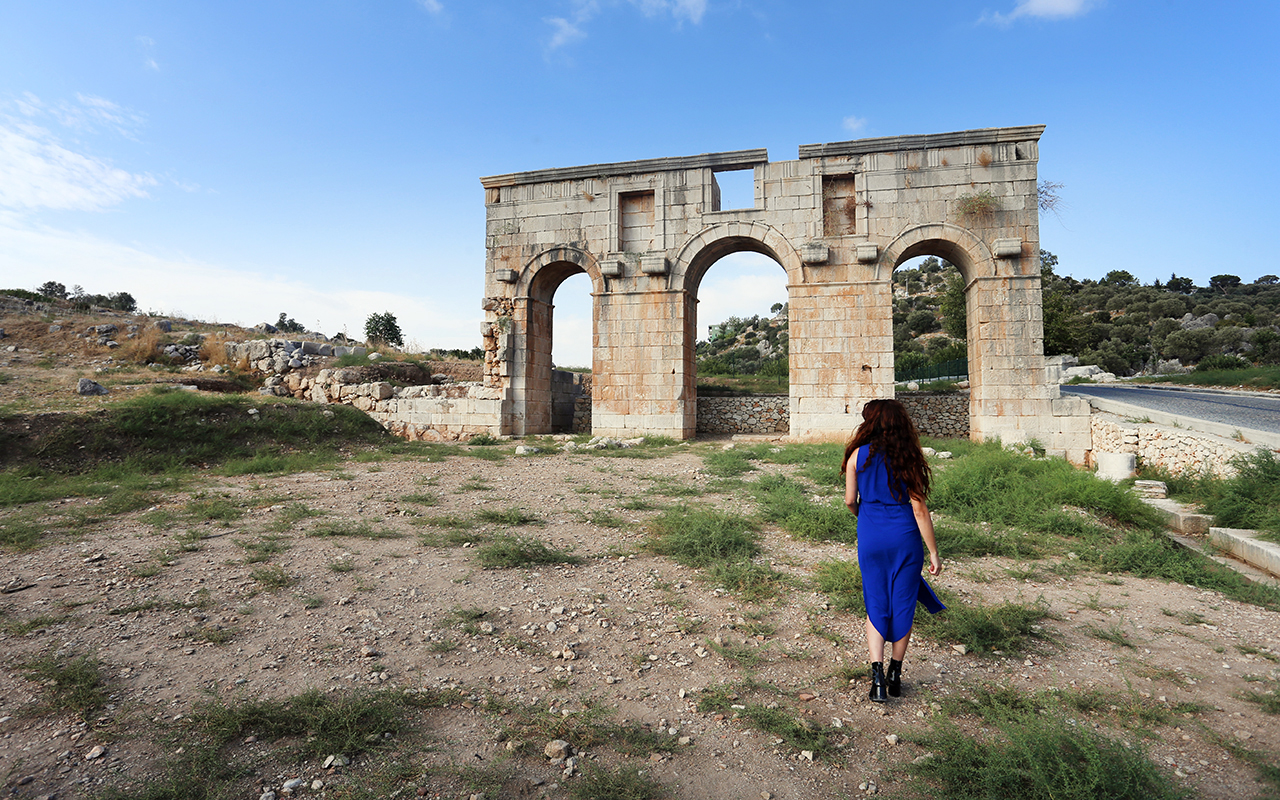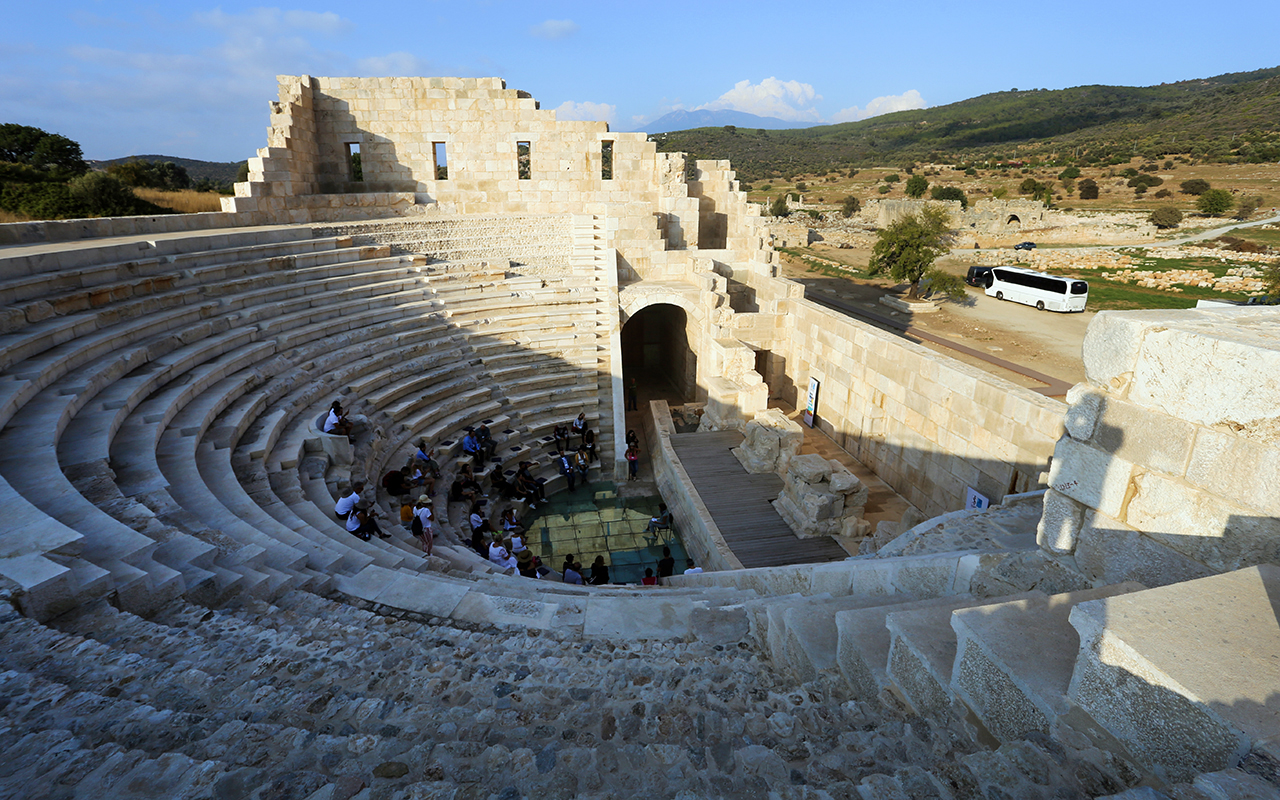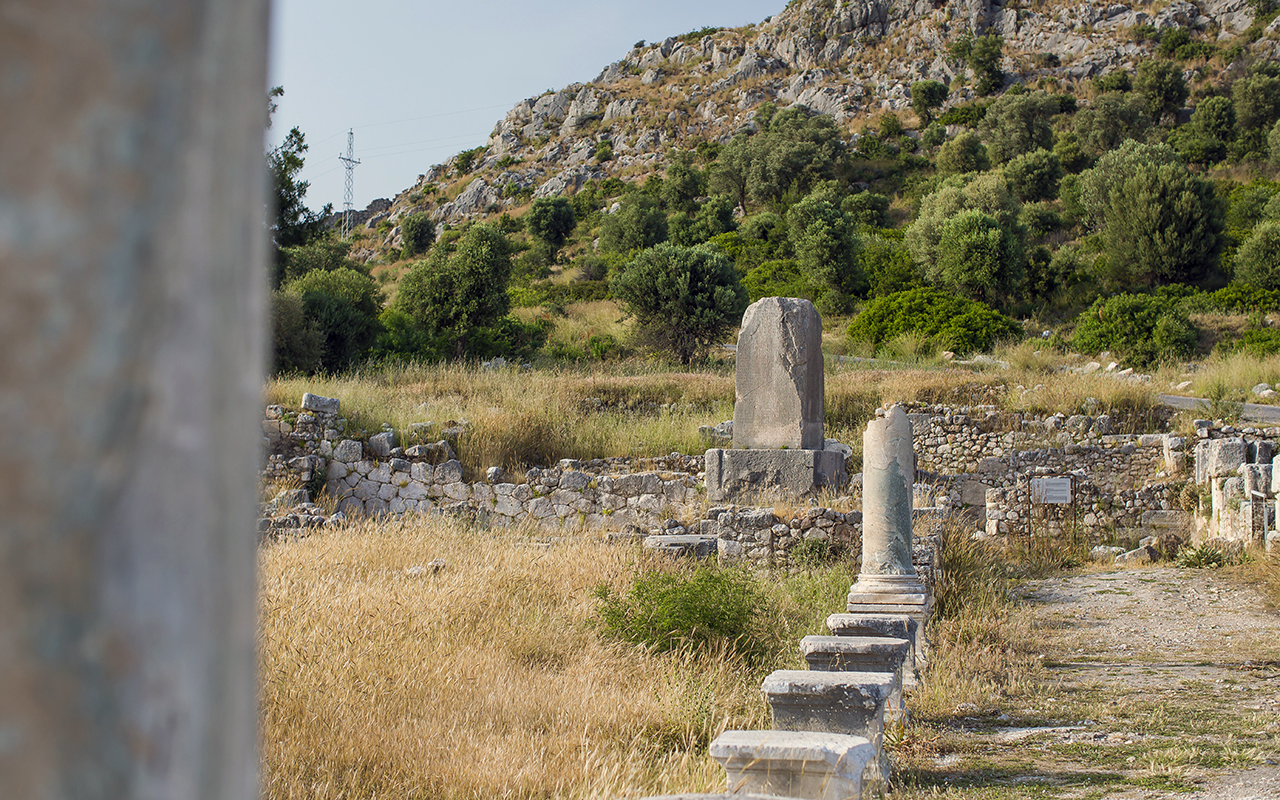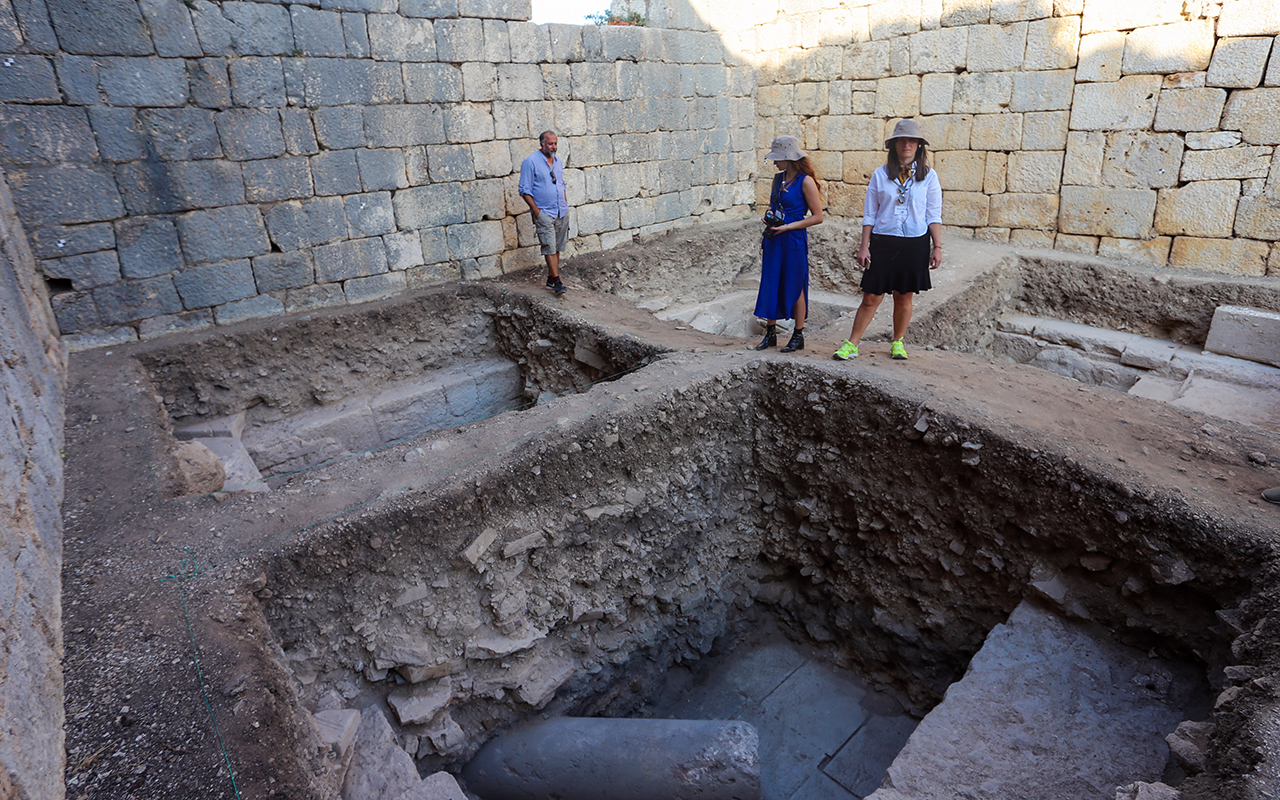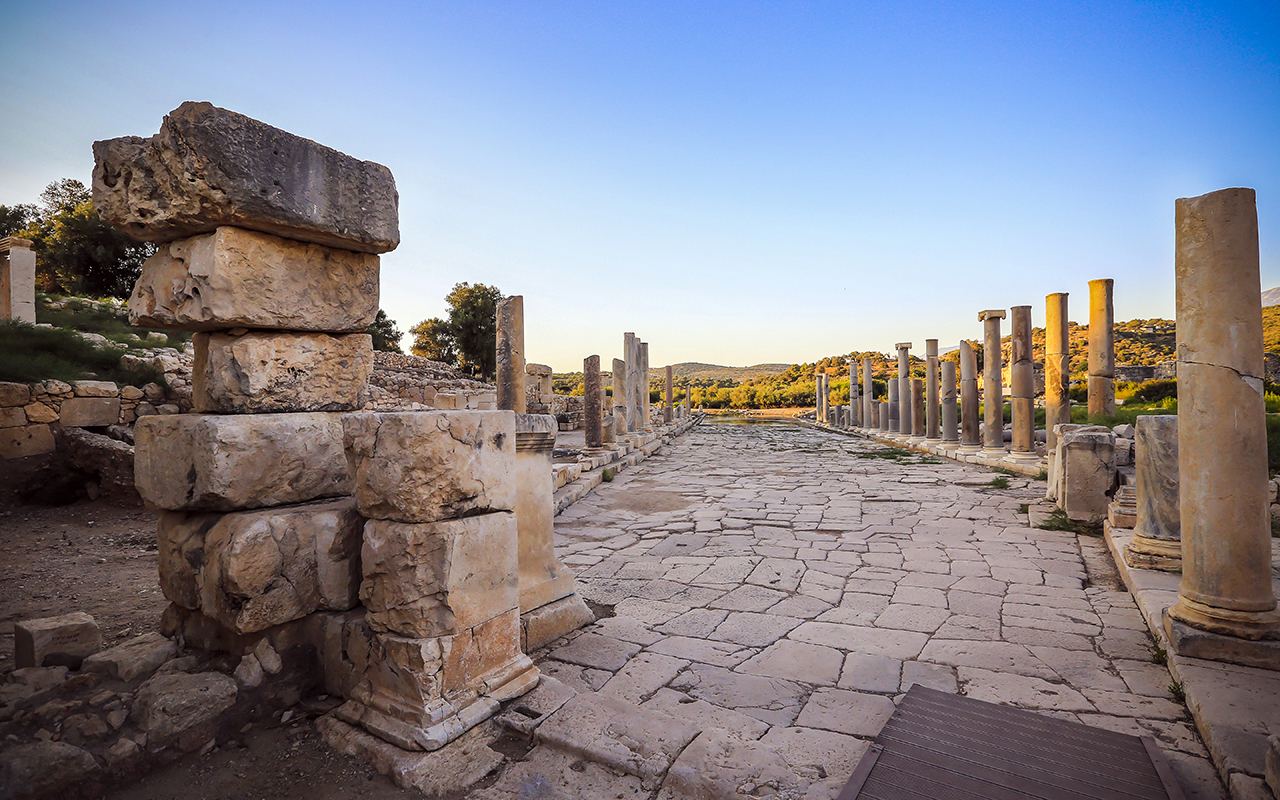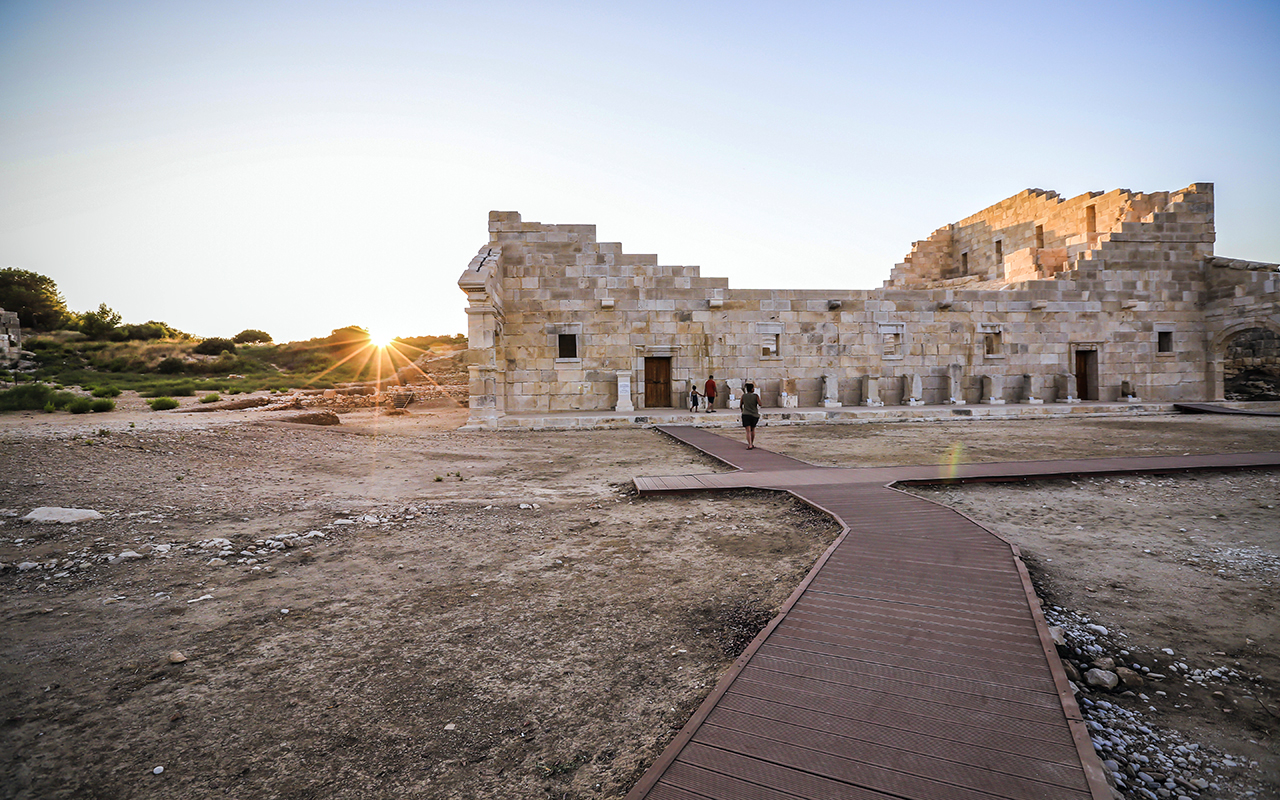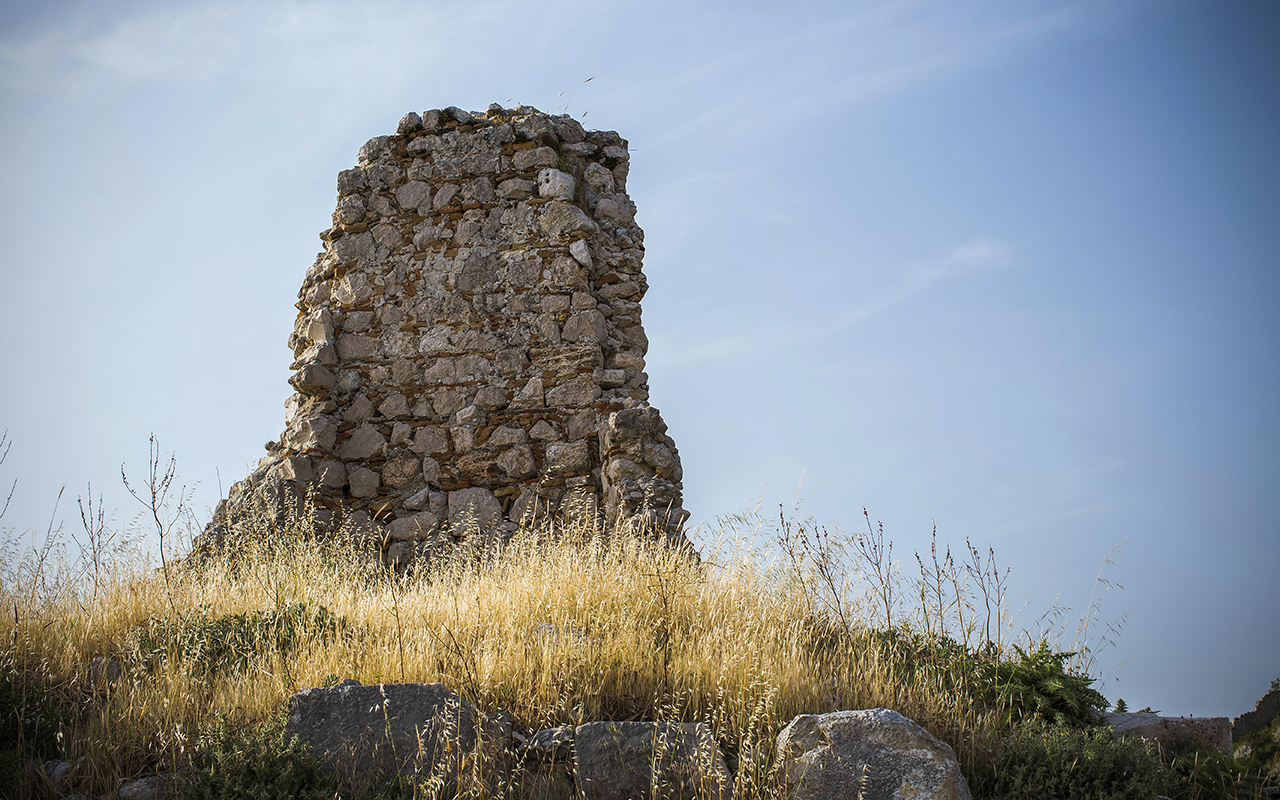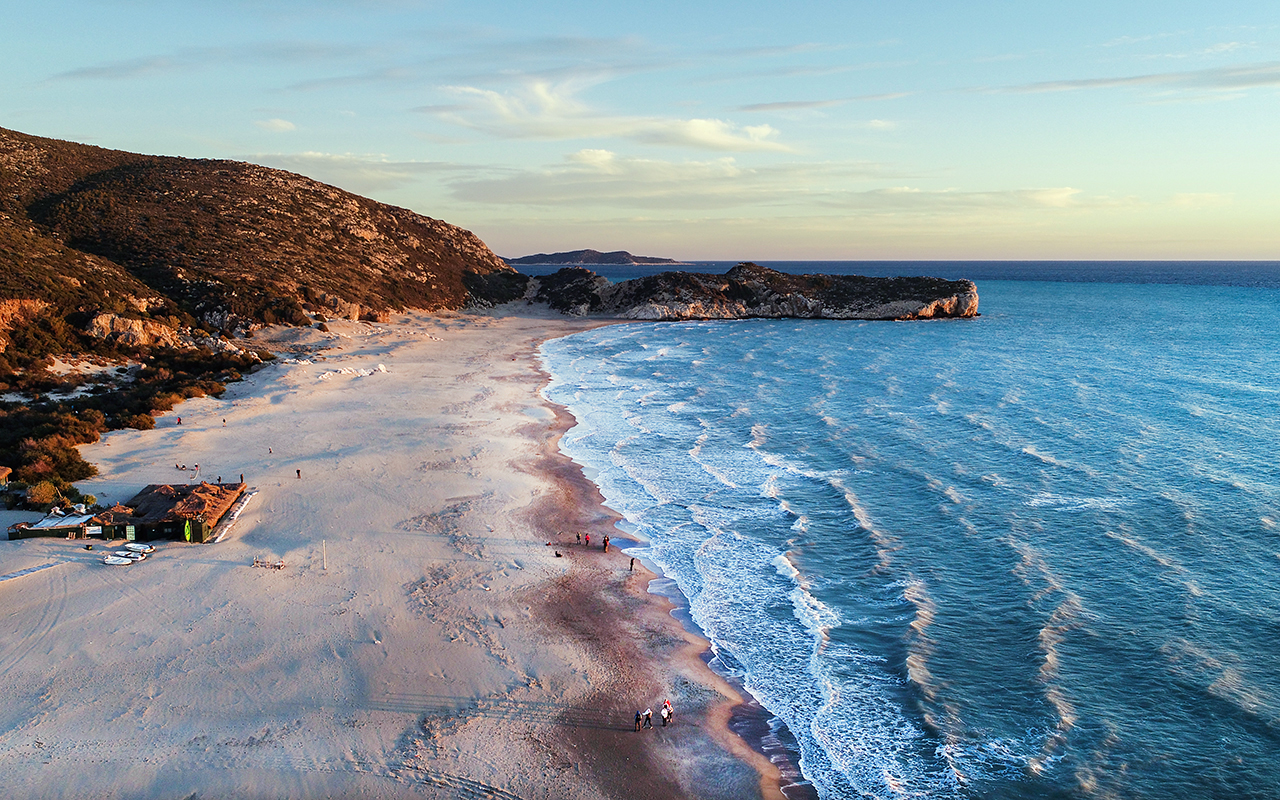Think of Kas as a treasure chest, a massive treasure chest that too big to explore it all. The rarest jewel in that treasure chest is Patara. With a length of 18 km, Patara is the Mediterranean Region’s longest beach, making it one of a kind. That’s not the only thing it has going for it. It’s much more than a beach. The Ancient city of Patara, once part of the Lycian Civilization, is very valuable historically and culturally.
Patara is significant in that it was once the capital of the Lycian League. It was recorded as ‘Patar’ in Hittite texts. As the only settlement in the Xanthos Valley, is retained its importance for centuries. Patara is also the birthplace of St. Nicolas, also known as Santa Claus. It’s also thought to be the place where St. Paul boarded the ship that took him to Rome.
The Ancient City of Patara
The Victory Arch of Modestus
Patara is just as important to the Christian world as it is to us. The excavations begun to bring Patara’s history to light in 1988 are still being carried out. St. Nicolas was born in Patara. It is also where St. Paul, one of Jesus’s 12 disciples, boarded a ship to Rome.
Every year, Turkey’s Ministry of Culture and Tourism chooses a themed project to introduce Turkey’s cultural wonders to the world. In 2020, Patara was chosen as the theme. The 5th century BCE Temple of Athena, the Roman baths, bouleuterion, storage buildings, stadium, church, Lycian sarcophagi, and necropolis are among the most important artifacts you’ll see in Patara.
Patara is truly full of surprises. You see something unique everywhere you look. The world’s oldest known lighthouse is on Patara’s seaside. Another of Patara’s important buildings is the Ottoman Wireless Telegraph Station tower from 1905. This harbor, where St. Paul boarded his ship to Rome, is found on Christian pilgrimage routes.
One of the things that makes Patara special is that it was the Lycian region’s most important harbor in ancient times. The city’s inner harbor has been completely closed off by the sand and silt brought by the Esen (Xanthos) River. When you come to Patara, you’ll notice that a large portion of the city is covered in sand. Current excavations continue to bring many important artifacts to light, however.
With Lycia’ largest harbor gate and as the last city in Xanthos Valley, Patara’s beaches, some of the cleanest in the Mediterranean, are right next to hills of sand and brush. After being filled with sea sand, the ancient harbor became cut off from the sea and slowly turned into a wetland lake. The tamarisk plants growing in these wetlands are seen as a defining feature of Patara.
The Roman Emperor Trajan was born in Patara. The large granaries he procured became a center of storage and transportation for the grains moved into Anatolia. During ancient times, Patara was a trade harbor where grains sent from Anatolia to Rome were stored.
Entry to the city was provided through the monumental gate which resembled the victory arch which is still standing today. This gate was built in the 1st century CE during the Roman Era.
Patara was one of the cities in the Lycian League and was also the capital. It hosted the important meetings of the Lycian League. Trade activities were usually discussed during these meetings, which were also joined by the Roman Governor. Patara wasn’t only a center of trade but of prophecy. It’s known that a temple dedicated to Apollo was built in Patara but we haven’t found the temple in any excavations so far.
The name of Patara was recorded in coins and Lycian inscriptions as ‘Pttara’. It was known as Patara during the Hellenistic Period and Batara during the Arab invasion. Thanks to its unmatched geographical position, it maintained its position as the Xanthos Valley’s most important harbor. The center of maritime trade in the south of Anatolia, the city of Patara was shaped around its natural harbor.
The Xanthos River brought its sand to Patara for millennia. Filling the Patara Bay, these sands prevented entry into the Patara harbor in the 15th century CE. After the loss of the use of its harbor, the city also lost its grand lifestyle.
The Roman Empire’s over 300 years of domination led to extreme developments in Patara, later becoming recognized as a holy city by the Christians during the Byzantine Period. Its population declining during the plague in 541 and the Arab Invasions during the 7th and 8th centuries, Patara became one of the first cities on the Mediterranean coast to be conquered by the Seljuks in 1211.
As one of the cities with three votes in the Lycian League, Patara became even more important during the Byzantine Era as the birthplace of St. Nicolas.
Another piece of information we’ve learned from the archeologic excavations of Patara is that the city was founded in the 7th century BCE and continued through the Ottoman Era and into the 16th century CE. Used as a stop by pilgrims headed to the holy land, the harbor of Patara, which maintained a population until the 16th century, was rediscovered in 1811-1812 by English Navy Captain Beaufort and stepped onto the historical stage once again.
The famous artifacts recovered by C. Fellows and friends during their excavations of Xanthos that are now on display in the British Museum were sent to London on ships that departed from the harbor of Patara.
To prevent sand from the nearby dunes from blowing into the ancient city, they planted acacia and eucalyptus trees. They are still working to save the ancient city from the influx of sand.
You’ll see a historic harbor building to the west of the wetlands and the remains of the harbor gate on the eastern coast. Most of the ruins still standing in Patara show traces of the Roman, Byzantine, and Middle Ages.
What to See in the Ancient City of Patara
The Modestus Victory Arch is the entrance to the ancient city of Patara. With a grand architectural flair, it’s thought it was constructed in honor of the regional governor in the 2nd century CE. The arch opens out towards the necropolis to its east which contains Lycian-type sarcophagi.
The city’s largest church is known as the Basilica. Just to the west of the road running from Gelemis Village to the seaside, this church is visible to the south of the harbor baths. Running from east to west, this basilica was uncovered during excavations carried out between 2013 and 2019.
It’s thought that this 5th century CE building was demolished during an earthquake but was reopened with new additions during the 6th century. With the addition of a chapel in the 11thcentury, the basilica took on its final form and is very important for research into Lycia and Patara’s early Christian and Byzantine Periods.
Another church is located to the north of the city gate along the ancient road running to the city from the south on the slope of Gunluk Hill. Used from the 4th to the 12th century, this church underwent many changes and renovations.
Patara’s Bouleuterion, where representatives from the member cities of the Lycian League used to meet, is the world’s oldest parliament building. Patara’s Bouleuterion was restored by Turkish Parliament and opened to public viewing. Built using local limestone, the walls of this building are 17 meters high.
You can use the stairs next to the entrance to reach the top row of seats in this building, which has a 1400-person capacity. There’s a small, marble-covered orchestra with a stage building just in front of it in the center of this building.
The theater is near Kursunlu Hill at the southern edge of the city. It displays characteristics of the Hellenistic Period. The theater building was rebuilt after being demolished during an earthquake in the 1st century CE. Now covered with sand blown in from the beach, the theater is perched on the slope of Kursunlu Hill, one of the best places to see the view of Patara and its surroundings.
The Tepecik Settlement is in the center of the city of Patara to the north of the inner harbor. Located east of the ancient bay, Tepecik is a natural rocky outcrop with a height of 30 meters. Overlooking the road entering the city from the north and the harbor, Tepecik is believed to be the city’s defense center. It was inhabited from the 6th century BCE to the 5th century CE.
Vespasian Baths is the name given to the four public bath buildings built in the city during the Roman Period. The Vespasian Baths consist of the Central Bath, the Harbor Bath, the Nero Bath, and the Small Bath structures. The Vespasian Baths are thought to be Anatolia’s oldest bathhouses, dating back to 60 CE.
The Granarium is a grain storage building found behind the wetland area to the northwest of Patara. Measuring 65×32 meters, this is one of the most significant ancient buildings still standing today. The lack of a direct connection between the granarium and city signifies that it was used to store grain coming into the city on ships or being sent abroad. It was built to accommodate aqueducts and water dispersion systems using the same technology that we today use for our tap water.
The ancient lighthouse procured by the Roman Emperor Nero in 64-65 CE is known as the Nero Lighthouse. Placed at two entrances to the Patara harbor, these 12-meter-tall lighthouses are now completely surrounded by sand.
Now located in the western corner of the harbor far from today’s coast, this lighthouse was procured by the Roman Emperor Nero in 64-65 CE. It is also the world’s oldest known lighthouse. It crumbled after the destructive earthquake on Rhodes and the tsunami that followed.
Address: Gelemis Village, Kas, Antalya
Visiting Hours:
Summer Season (April 1st – October 1st) 08:00-19:00
Winter Season (October 1st – April 1st) 08:30-17:30.
The ancient city is open seven days a week.
Entry Fee:
The entry fee to the ancient city of Patara is 30 TL. Museum passes are valid.
Are you on holiday in Kas or Kalkan and would like to take a boat trip, but can’t choose the best option for you? Then, simply let us help you decide. We can organize a private boat trip for you on our boats if you like. Please visit our daily boat trips in Kas page.


